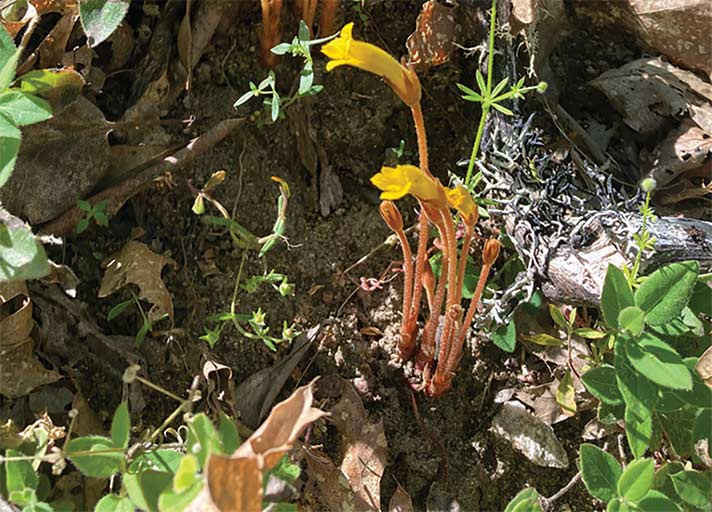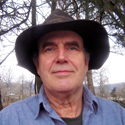Trail Talk – July 2024
THAT WE’D NOT ONLY BUILT THAT TRAIL, that we’d walked and run it innumerable times recreationally, and in our role as a parks volunteer, had completed routine annual maintenance there, would never have prepared us to find a new (to us) isolated member of the broomrape family. There they pushed forth from the soil beneath the oaks, just above the trail, leafless, brilliant lemony blooms, tubular quintuply lobed, strange cousins to the ubiquitous California groundcone. Here, we spied for the first time in Forest Park, the clustered groundcone, a parasitic broomrape most associated with plants in the artemisia genus.
Here was a reminder to walk the the very same trails throughout the seasons, exploring each footstep with wondering and wandering eyes. John Muir once wrote that he abhorred the idea of hiking, that hiking implied a purpose, a goal. Instead, he suggested that we saunter through the wild areas, always mindful of what went on around us. In our current vernacular, we are Nature Bathing, though the practice is generations old in other cultures.
Another day, another adventure. As we descended Knobcone Pine Trail recently in Forest Park, we were observant of the changes occurring in the aftermath of the fuels reduction project: in this instance, the resurgence of deer brush ceanothus after the removal of the dense blanket of manzanita. Songbirds flittered and fluttered around the brush piles, another reminder that the piles will be burnt this fall, after the nesting season. As the morning warmed, we heard a distinct bird-like chirp coming from the unmolested manzanita thicket across the gully. It occurred to us that it truly wasn’t a bird at all, but the strange “bark” of a cougar. As we continued down the trail, another occasional chirp sounded from the thicket, a reminder that we are not the only large mammal frequenting the slopes above town.
As the season progresses, the seasonal streams disappear into their substrates, leaving the occasional waterhole for wildlife. The sunnier slopes become inhospitable in the blazing afternoons, and visitors find relief in the canyon bottoms where the broadleaf ferns flourish. For a more solitary experience, the wise wanderer is on the trails at first light, and heads to the farther reaches of the park. If you haven’t explored all the bench placements yet, you might challenge yourself to visit all fifty-five in Forest Park. Some are challenging to achieve, some are in quiet, cool canyons, some are on exposed slopes. There are views out over the surrounding country from many, and others are set in deep woods, but all beckon the weary wanderer to simply slow down, rest a bit, and spend thoughtful, mindful time absorbing our natural world.
Bill Bryson, the author and walker, would have us remember that our legs are useful attachments. Astonished that the average distance Americans find too far to walk without getting in a car to drive is but 600 feet, he is a strong proponent of a good ramble through the wilds. So, we’ll leave you there. It’s time for a good ramble. Carry on.

 Trail Talk is a monthly column by Clayton Gillette about hiking the Jacksonville Woodlands trail system. For more information, please visit the Jacksonville Woodlands Association website at
Trail Talk is a monthly column by Clayton Gillette about hiking the Jacksonville Woodlands trail system. For more information, please visit the Jacksonville Woodlands Association website at